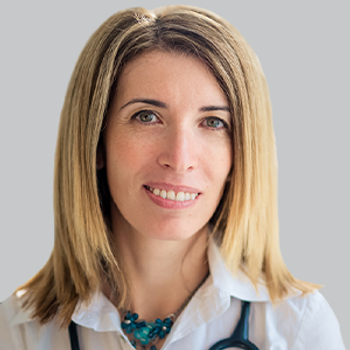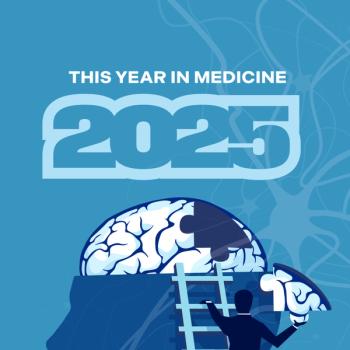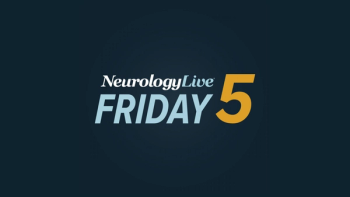
NeuroVoices: John Norbury, MD, on Training the Next Generation of Neuromuscular Specialists
The associate professor of physical medicine and rehabilitation at Virginia Commonwealth University discussed his passion for educating others about electrodiagnosis and ultrasound in neuromuscular disorders.
Academic physiatrist John Norbury, MD, recently received the 2025 Ernest Johnson Outstanding Educator Award at the
Trained at
In a new iteration of
Could you share some background on what led to you being recognized with this award?
John Norbury, MD: I’ve been in academics since I graduated residency from Thomas Jefferson in 2010. I was really lucky during my training to be trained by Gerald Herbison, MD, and Channarayapatna Sridhara, MD, who were phenomenal electromyographers. They put a lot of effort into my education and my development and got me fired up about electrodiagnosis. I was also trained by Levon N. Nazarian, MD, who is a radiologist. At the time, neuromuscular ultrasound was a burgeoning field, and I was able, through my career, to really have the opportunity to teach residents—to pass on my passion for ultrasound and electrodiagnosis to residents at East Carolina University, start up a program at Texas Tech, and now at VCU. It’s just really great to see those efforts recognized in this way.
Could you discuss more about the field of research that you educate others about?
There are 2 main areas. Electrodiagnosis is the diagnosis of problems in nerves and muscles. That’s an older field, and it’s a technically demanding part of what we do. It’s been really fun to take the residents and help them master these principles, get good at it. Then, ultrasound is a newer part of the equation. A lot of the younger residents are much more excited about ultrasound because it has lots of applications outside of neuromuscular. Merging those 2 areas together has been a huge part of my work as an educator. Also making it fun, bringing the patient into the mix, doing the teaching in the room, putting people at ease—both the patients so they can tolerate the procedure, and then also the learners, the medical students and the residents. Because when they feel at ease, they’re going to be able to learn more in that environment.
When it comes to electrodiagnosis and ultrasound, what would you say are the big-picture points clinicians should know about?
It sounds cliché, but these are really exciting technologies, and they’re only ever as good as the conversation you have with the patient as the physical exam. There’s always a tendency to get really enamored with the technologies, and that can sometimes—in both ultrasound and EMG—lead you astray. For me, it really starts with just that first conversation with the patient and coming up in your mind with a list of, “Hey, here are the things that could be going on.” What I harp on with my trainees is whatever you decide, it’s only your best guess, your best hypothesis. Really, it’s not about the technologies themselves—it’s about getting those data points to refine that list of possibilities and have the patient walk out with as much information as possible about what’s causing their weakness, their numbness, their neuromuscular symptoms.
When it comes to these technologies and their applications, are there any innovations on the horizon or emerging trends in the field that you’re particularly excited about?
Again, it sounds cliché, but artificial intelligence (AI). For just about everything, the rise in computing power is just phenomenal. One of the things that’s changed just in the past 4 or 5 weeks for me is the advent of AI to help with documentation. Now, the positive framing of it is, I can really focus on listening to the patient because I know that AI is taking care of the recording of the visit—recording of the history and physical—and that gives me more time to be present with the patient.
Is there anything else you want to share, either about being the recipient of this award or your experience at AANEM 2025?
For me, it’s been just so rewarding to be in academic medicine. If I were to just do the clinical care—just see patients—that would be rewarding and enjoyable, and that’s a great part of my job. But the thing that really lights me up is when you see somebody who you’ve mentored, somebody who you’ve trained, and get to watch them blossom. Because that means not only are you providing care to the patients that you see, but you’re improving the lives of the patients that that trainee goes on to see. You’re helping to make an impact on their career. There’s just such a need for more people who do this work. To grow that cohort of clinicians, we need more people to invest in academic neuromuscular and go down that route.
Transcript edited for clarity.
REFERENCES
1. John Norbury, MD, Receives AANEM's 2025 Ernest Johnson Outstanding Educator Award. News release. AANEM. August 21, 2025. Accessed November 4, 2025. https://www.newswise.com/articles/john-norbury-md-receives-aanem-s-2025-ernest-johnson-outstanding-educator-award
Editor's Note: Conversation with Norbury was conducted by
Newsletter
Keep your finger on the pulse of neurology—subscribe to NeurologyLive for expert interviews, new data, and breakthrough treatment updates.




















